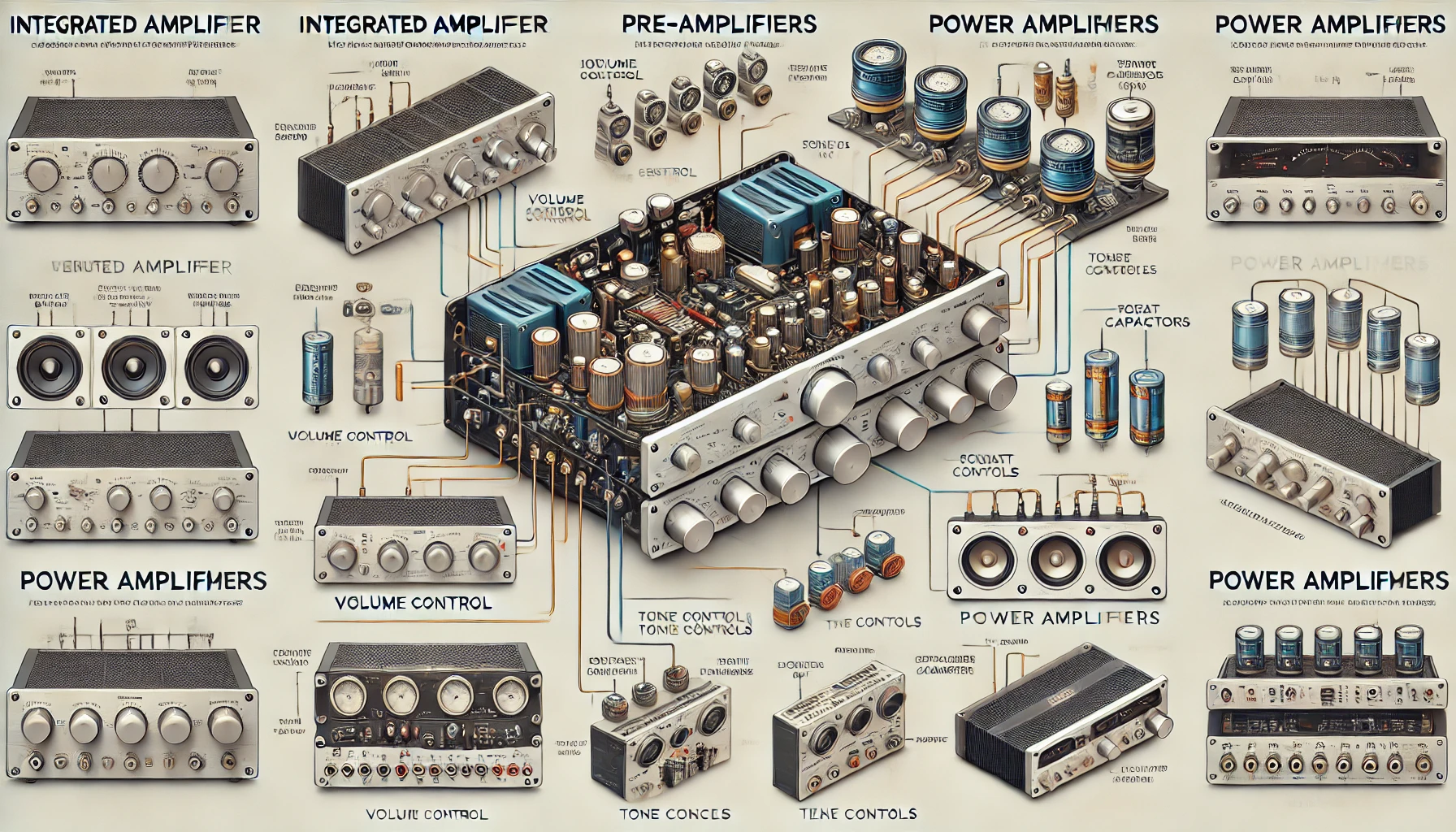Amplifier Classifications
When diving into the world of audio equipment, one of the most fundamental yet complex topics to understand is amplifier classifications. Amplifiers are the backbone of any high-fidelity sound system, and understanding the differences between integrated amplifiers, pre-amplifiers, and power amplifiers can significantly enhance your audio experience. In this article, we will break down these classifications, explore their functions, and provide examples and tips to help you make informed decisions for your audio setup.
What is an Amplifier?
Before we delve into the classifications, let’s start with a basic understanding of what an amplifier does. At its core, an amplifier boosts low-level audio signals to a level that can drive speakers, delivering the sound we hear. Amplifiers come in various forms and serve different purposes within an audio system, making it essential to understand their distinct roles.
Integrated Amplifiers
Definition and Function
An integrated amplifier combines the functionalities of both a pre-amplifier and a power amplifier into a single unit. This design simplifies the audio system setup by reducing the number of components required. Integrated amplifiers are ideal for those seeking a straightforward solution without compromising on sound quality.
Advantages of Integrated Amplifiers
- Space-Saving Design: By housing both pre-amplification and power amplification in one unit, integrated amplifiers save valuable space.
- Simplified Setup: With fewer components to connect, setting up an integrated amplifier is more straightforward, making it an excellent choice for beginners.
- Cost-Effective: Purchasing a single integrated unit can be more economical than buying separate pre-amplifiers and power amplifiers.
Examples and Recommendations
For those looking for a high-quality integrated amplifier, consider models like the Yamaha A-S801 or the Cambridge Audio CXA81. These models offer excellent performance and a range of features suited for various audio needs.
Pre-amplifiers
Definition and Function
A pre-amplifier (or preamp) is responsible for taking weak audio signals from sources such as turntables, CD players, or digital music files and boosting them to a level suitable for further amplification by a power amplifier. Pre-amplifiers also provide essential functions such as volume control, source selection, and tone adjustments.
Advantages of Pre-amplifiers
- Enhanced Control: Pre-amplifiers offer greater control over audio settings, including equalization and balance, allowing for a more tailored listening experience.
- Improved Signal Quality: By handling the initial amplification stage, pre-amplifiers can significantly enhance the quality of the audio signal before it reaches the power amplifier.
- Versatility: Pre-amplifiers are compatible with various audio sources and formats, making them a versatile addition to any audio system.
Examples and Recommendations
For audiophiles seeking a top-notch pre-amplifier, the Schiit Freya+ and the Parasound Halo P 6 are excellent choices. These models provide high-quality signal processing and a range of connectivity options.
Power Amplifiers
Definition and Function
A power amplifier (or power amp) takes the audio signal from the pre-amplifier and boosts it to a level that can drive speakers to produce sound. Power amplifiers are dedicated to providing the necessary power to your speakers, ensuring they operate efficiently and deliver high-fidelity sound.
Advantages of Power Amplifiers
- High Power Output: Power amplifiers are designed to deliver substantial power to speakers, making them suitable for large rooms or high-volume listening.
- Dedicated Functionality: By focusing solely on amplifying the audio signal, power amplifiers can provide more robust and dynamic sound quality.
- Flexibility: Power amplifiers can be paired with various pre-amplifiers and speakers, offering flexibility in customizing your audio system.
Examples and Recommendations
Notable power amplifiers include the Emotiva XPA-2 Gen3 and the NAD C 298. These models are known for their power, clarity, and ability to drive a wide range of speakers effectively.
How to Choose the Right Amplifier for Your Needs
Selecting the suitable amplifier depends on several factors, including your audio preferences, the size of your listening space, and your existing audio equipment. Here are some tips to help you make the best choice:
- Assess Your Needs: Determine whether you need an integrated amplifier, a pre-amplifier, or a power amplifier based on your current audio setup and desired functionality.
- Consider Your Space: Integrated amplifiers are ideal for smaller spaces or minimalist setups, while separate pre-amplifiers and power amplifiers may be better suited for larger rooms or complex systems.
- Evaluate Your Budget: Integrated amplifiers often provide a cost-effective solution, but investing in high-quality separate components can yield superior audio performance.
- Look for Compatibility: Ensure that the amplifier you choose is compatible with your existing audio sources and speakers.
Why Amplifier Classifications Matter
When setting up a high-fidelity audio system, understanding amplifier classifications is crucial. Integrated amplifiers, pre-amplifiers, and power amplifiers each play distinct roles that affect the overall sound quality and performance of your setup. By choosing the right type of amplifier, you can optimize your audio experience, whether you’re a casual listener or a dedicated audiophile. Investing in high-quality amplification equipment not only enhances sound clarity and power but also provides greater control and flexibility over your audio system.
Conclusion
In summary, amplifiers are an essential component of any audio system, and understanding the differences between integrated amplifiers, pre-amplifiers, and power amplifiers is crucial in achieving optimal sound quality. Integrated amplifiers offer a convenient, all-in-one solution, while pre-amplifiers provide detailed control over audio signals, and power amplifiers deliver the necessary power to drive speakers. By carefully considering your needs and preferences, you can select the right amplifier to enhance your listening experience. Remember, whether you’re setting up a new system or upgrading an existing one, the right amplifier can make all the difference in bringing your music to life.
Informative List: Key Takeaways
- Integrated Amplifiers: Combine pre-amplification and power amplification in one unit; ideal for space-saving and simplified setups.
- Pre-amplifiers: Handle initial signal processing and provide control over audio settings; essential for high-quality audio systems.
- Power Amplifiers: Boost audio signals to drive speakers, which is crucial for delivering powerful and dynamic sound.
By understanding these classifications, you’ll be better equipped to make informed decisions and enjoy the full potential of your audio system.

